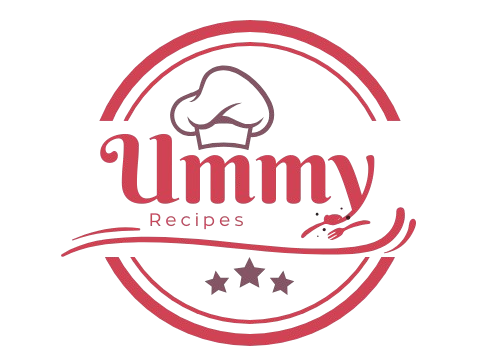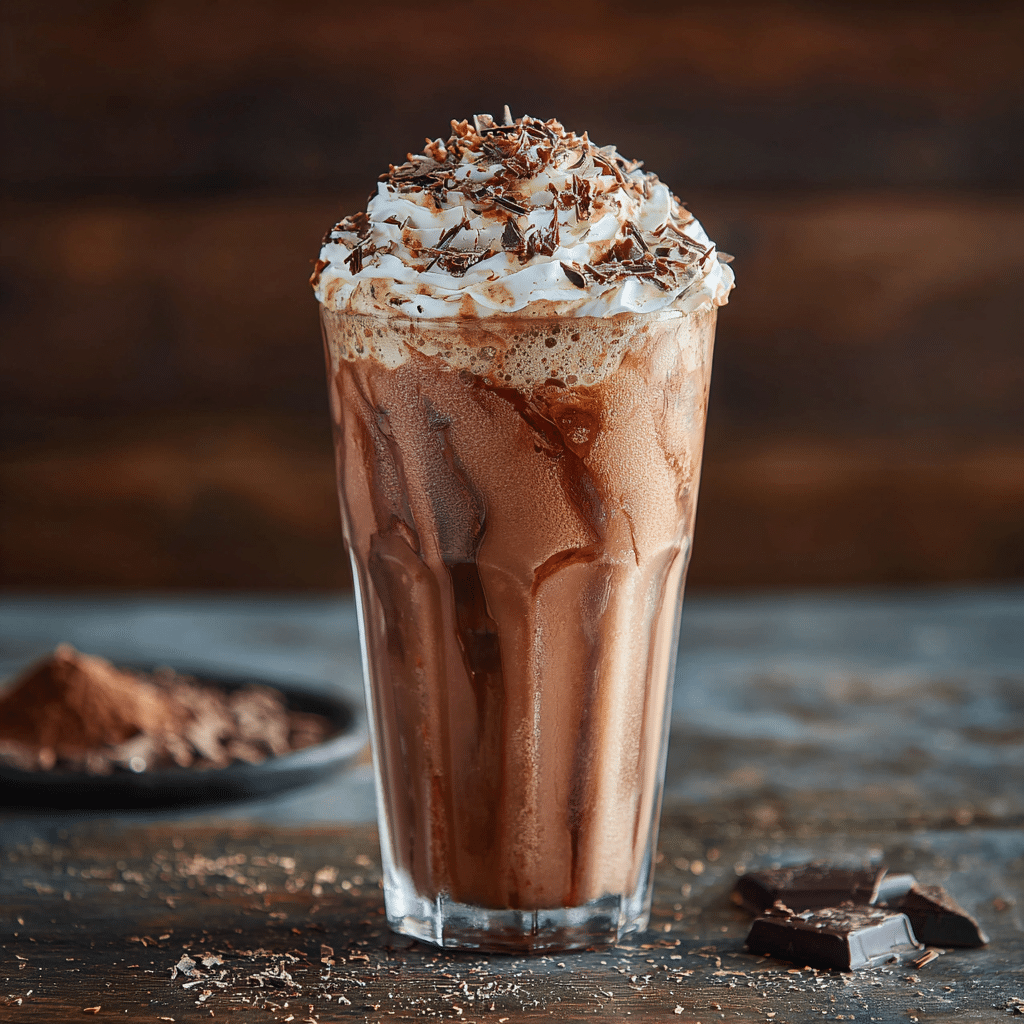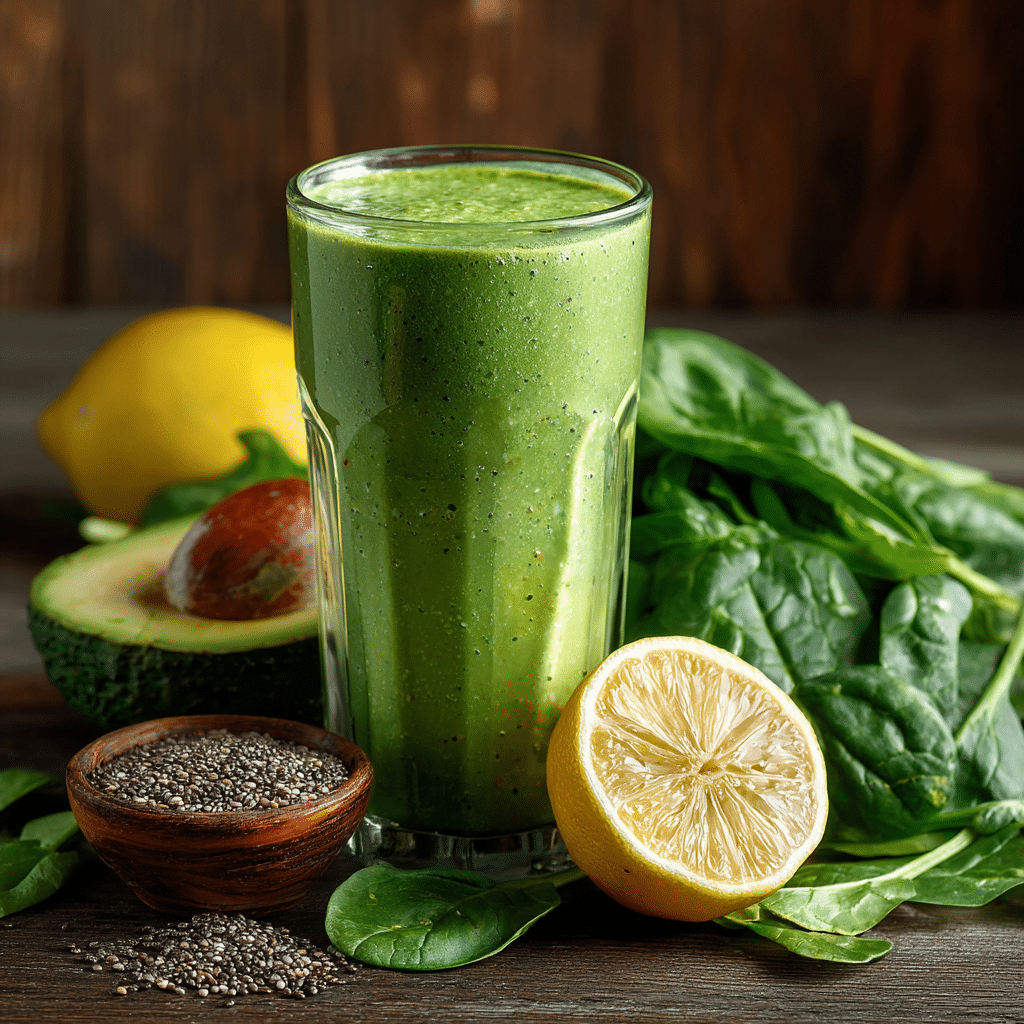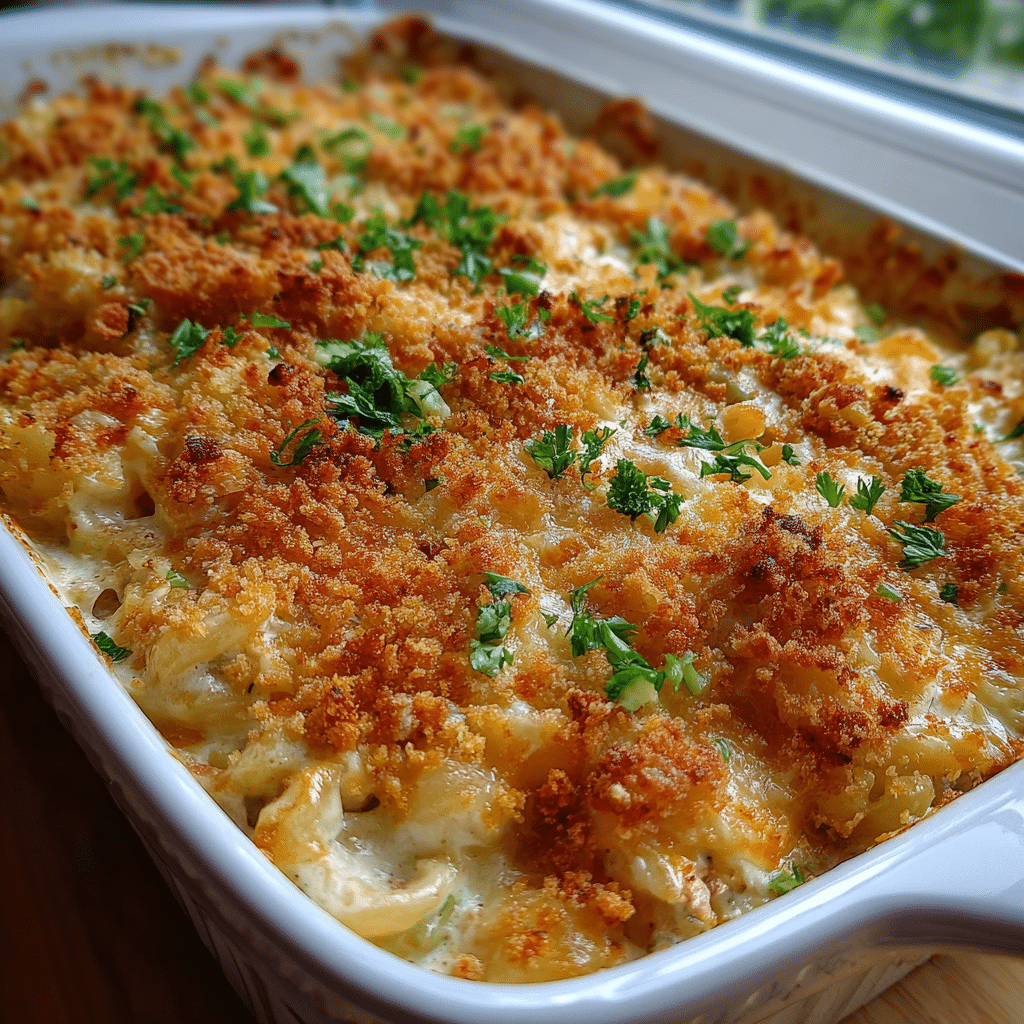Bread lovers, get ready for something delightfully different. This dill pickle bread recipe brings together the irresistible tang of dill pickles, the warmth of freshly baked bread, and a hint of cheesy richness for a loaf that’s both comforting and surprising. Whether you’re a pickle enthusiast or just love trying new bread ideas, this recipe transforms a pantry staple into a standout treat.
Looking for inspiration? Try Cottage Cheese Banana Bread for another creative twist on homemade baking.
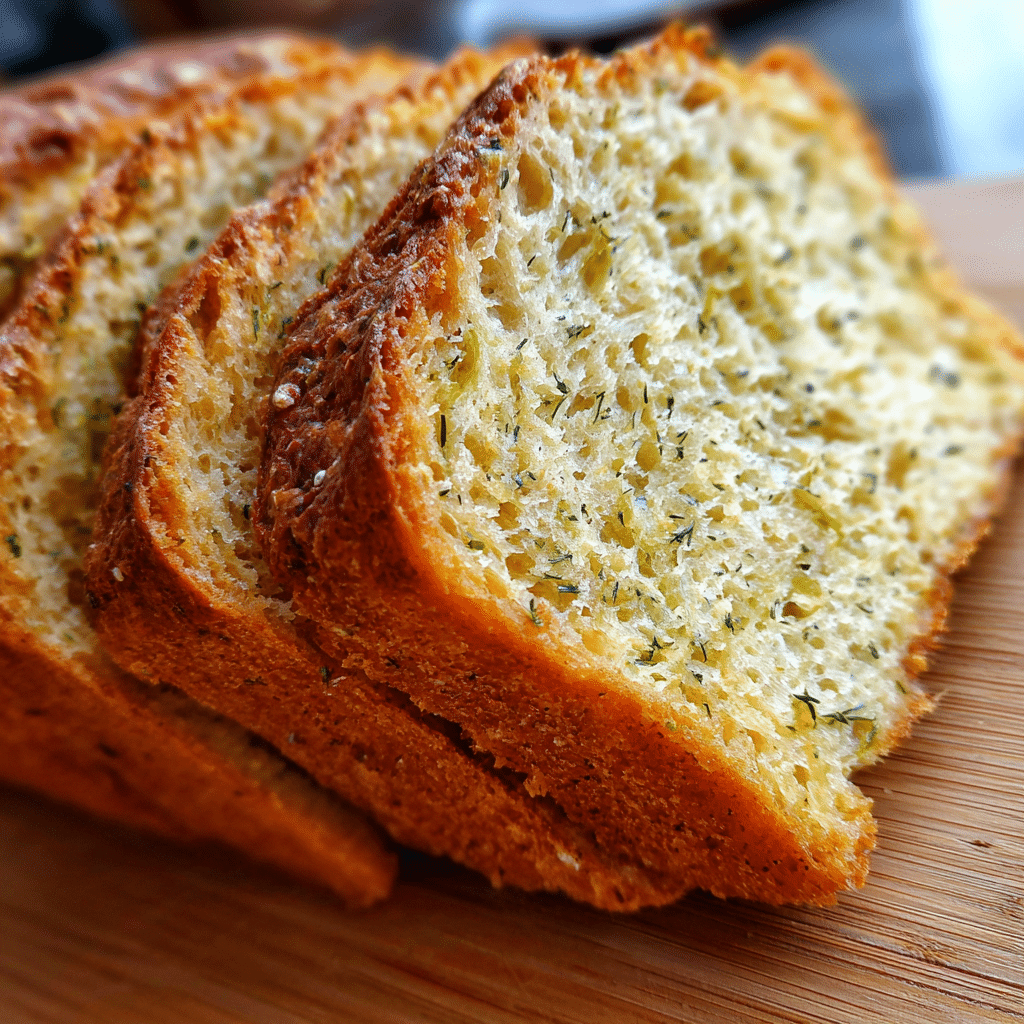
Table of Contents
Why Dill Pickle Bread Is Worth Trying
What Makes Dill Pickle Bread Unique
The dill pickle bread recipe stands out because it combines savory and tangy elements in one loaf. While most quick breads lean sweet, this one uses pickle juice, chopped dill pickles, and shredded cheese to create a soft, moist texture packed with briny flavor. The pickle juice doesn’t just add taste — its acidity helps tenderize the crumb, resulting in a flavorful and fluffy loaf.
Unlike traditional yeast bread, most dill pickle bread recipes use baking powder for lift, which makes the process faster and easier. In just under an hour, you can have a golden-brown loaf ready to slice and serve.
The Flavor Profile: Tangy, Savory, and Perfectly Balanced
Each bite of dill pickle bread delivers layers of flavor. The tang from the pickles pairs beautifully with melted cheese, while the fresh dill adds a fragrant herbal note. The texture is hearty yet soft, making it ideal for snacking, sandwiches, or pairing with creamy soups.
Chefs often compare this loaf to a savory quick bread or even a “pickle-cheddar” hybrid — it’s that distinctive. The balance of salty, tangy, and herby tones keeps you reaching for another slice.
Best Occasions to Serve Dill Pickle Bread
A dill pickle bread recipe fits nearly any meal plan:
- As a side for soups and stews — especially tomato, potato, or chili.
- At barbecues or picnics, where its zesty flavor complements grilled meats.
- In sandwiches, giving a flavor upgrade to ham, turkey, or grilled cheese.
- As an appetizer, sliced thin with a dab of cream cheese or butter.
- During brunch, served alongside eggs and salads for a bold twist.
Don’t miss our Mastoris Cheese Bread Recipe if you’re into cheesy, savory loaves with bakery-style texture.
Dill pickle bread’s charm lies in its versatility — you can serve it warm, at room temperature, or even toasted the next day. Its flavor improves overnight as the pickle brine settles into the crumb, intensifying its savory tang.
Print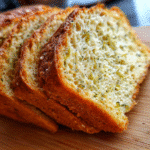
Dill Pickle Bread Recipe — A Tangy, Savory Loaf You’ll Love
- Total Time: 55 mins
- Yield: 1 loaf (8 servings) 1x
- Diet: Vegetarian
Description
This Dill Pickle Bread Recipe combines the tang of dill pickles with the richness of cheese and the softness of homemade bread. A savory quick bread that’s perfect for sandwiches, soups, or snacking.
Ingredients
2 cups all-purpose flour
1 tbsp baking powder
1/2 tsp baking soda
1/2 tsp garlic powder
1/2 tsp salt
2 large eggs
1/3 cup vegetable oil (or melted butter)
3/4 cup dill pickle juice
1 cup chopped dill pickles (drained)
1 cup shredded cheddar cheese
2 tbsp fresh dill, chopped (optional)
Instructions
1. Preheat oven to 350°F (175°C) and grease a 9×5-inch loaf pan.
2. In a large bowl, whisk flour, baking powder, baking soda, salt, and garlic powder.
3. In a separate bowl, beat eggs, oil, and pickle juice.
4. Fold the wet mixture into the dry ingredients until just combined.
5. Stir in chopped pickles, cheese, and fresh dill.
6. Pour batter into loaf pan, smooth top, and sprinkle with cheese.
7. Bake for 40–45 minutes or until golden and a toothpick comes out clean.
8. Cool in pan for 10 minutes, then transfer to a rack.
9. Slice and serve warm or at room temperature.
Notes
For stronger flavor, use extra-sharp cheddar or a tablespoon of pickle brine.
Store wrapped at room temperature up to 4 days or freeze up to 3 months.
Reheat slices in a 325°F oven for 8–10 minutes for best texture.
- Prep Time: 10 mins
- Cook Time: 45 mins
- Category: Bread
- Method: Baking
- Cuisine: American
Nutrition
- Serving Size: 1 slice
- Calories: 180
- Sugar: 2g
- Sodium: 420mg
- Fat: 8g
- Saturated Fat: 3g
- Unsaturated Fat: 4g
- Trans Fat: 0g
- Carbohydrates: 20g
- Fiber: 1g
- Protein: 5g
- Cholesterol: 35mg
Ingredients You’ll Need
Before baking your dill pickle bread recipe, it’s important to understand how each ingredient contributes to the flavor and texture of the loaf. The magic lies in how the savory ingredients balance the acidity of the pickles. Here’s a breakdown of what you’ll need and why it matters.
Core Ingredients List for Dill Pickle Bread
Here’s the foundation of every great dill pickle bread recipe:
| Ingredient | Purpose | Notes |
|---|---|---|
| All-purpose flour | Structure | Provides the base and texture of the bread |
| Baking powder | Leavening | Helps the bread rise without yeast |
| Eggs | Binding | Adds moisture and richness |
| Pickle juice | Flavor + Acidity | Key for tangy taste and tender crumb |
| Chopped dill pickles | Texture | Adds crunch and bursts of flavor |
| Shredded cheese (cheddar or mozzarella) | Flavor + Moisture | Melts into the dough for savory depth |
| Fresh dill (optional) | Aroma | Enhances the dill flavor |
| Vegetable oil or melted butter | Moisture | Keeps the crumb soft |
| Salt + garlic powder | Seasoning | Balances the tang and adds depth |
This mix gives you a loaf that’s light yet rich, tangy yet balanced. The pickle juice and chopped pickles make this bread truly distinctive — they provide the acid and crunch that most breads lack.
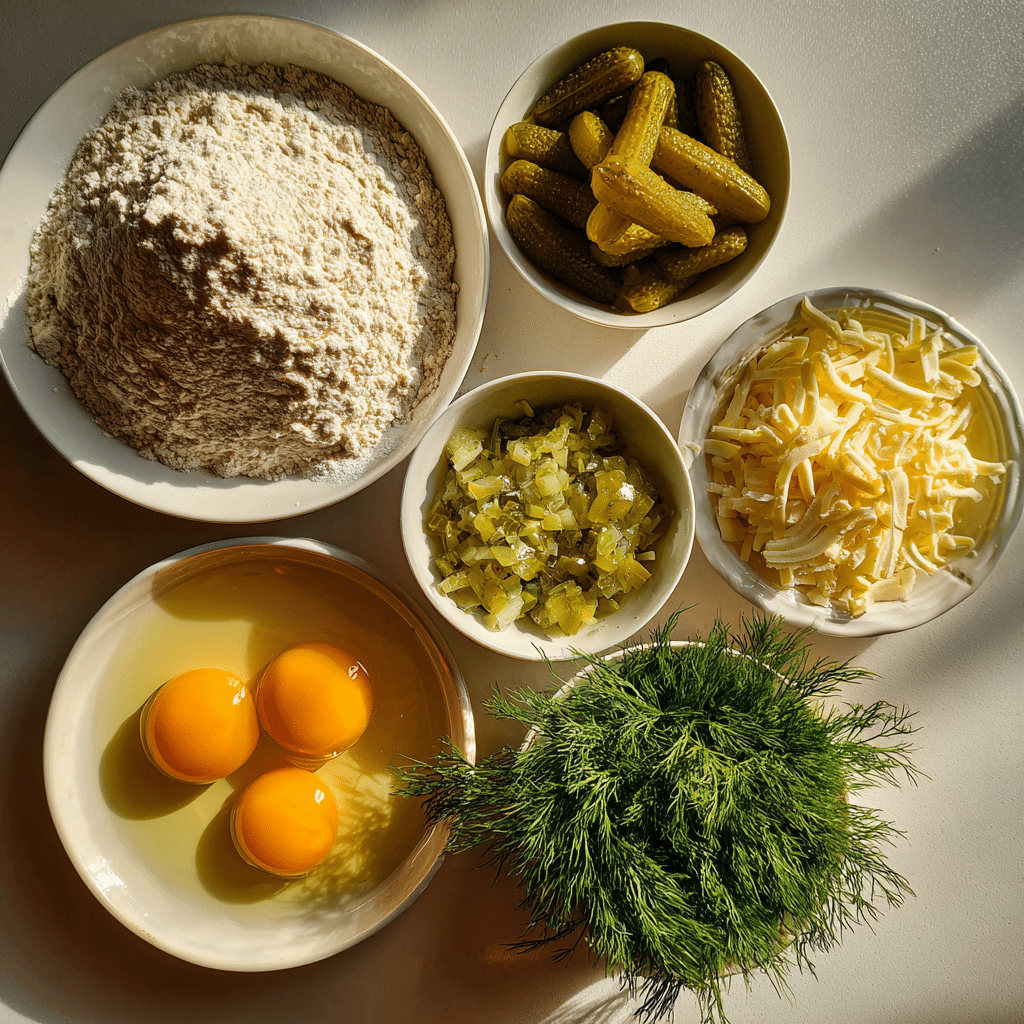
Why Pickle Juice Is the Secret Ingredient
Pickle juice is the heart of a good dill pickle bread recipe. It does more than flavor — it acts as a natural tenderizer, softening the dough and enhancing the tang. Plus, the acidity activates the baking powder for a better rise.
If you’re wondering which kind of pickle juice works best, go for dill brine (not sweet pickle juice). It’s savory, herby, and cuts through the richness of cheese beautifully. The combination of dill, vinegar, and garlic creates that unforgettable tang.
Looking for more clever uses of pickle juice? Discover great ideas like Pickled Cauliflower Recipe to repurpose leftover brine and boost flavor in other dishes.
Substitutions and Dietary Tweaks
One of the best things about this dill pickle bread recipe is its flexibility. Whether you’re avoiding gluten or watching calories, you can tweak it easily:
- Gluten-free version: Substitute with a 1:1 gluten-free flour blend.
- Low-fat version: Replace oil with unsweetened applesauce or Greek yogurt.
- Vegan version: Use flax eggs and dairy-free cheese alternatives.
- Extra flavor: Add diced jalapeños, shredded carrots, or a dash of cayenne.
The bread is forgiving — you can adjust the moisture slightly depending on the texture of your chopped pickles or brand of flour. Aim for a thick batter consistency, similar to banana bread.
Don’t miss our Spiced Pear Bread Recipe if you’re looking to explore other creative quick breads.
Expert Tip: Balance the Tang
If you find your first loaf too sour, reduce the amount of pickle juice slightly or add an extra tablespoon of cheese. Conversely, if you love that briny punch, use half pickle juice and half milk instead of water or buttermilk — this keeps it flavorful yet moist.
Dill Pickle Bread Variations
Every baker has their own twist on the classic dill pickle bread recipe, and the fun lies in experimenting with flavors, textures, and baking methods. Whether you prefer a simple no-yeast loaf, a traditional yeast bread, or even bite-sized muffins, there’s a version for every mood and occasion.
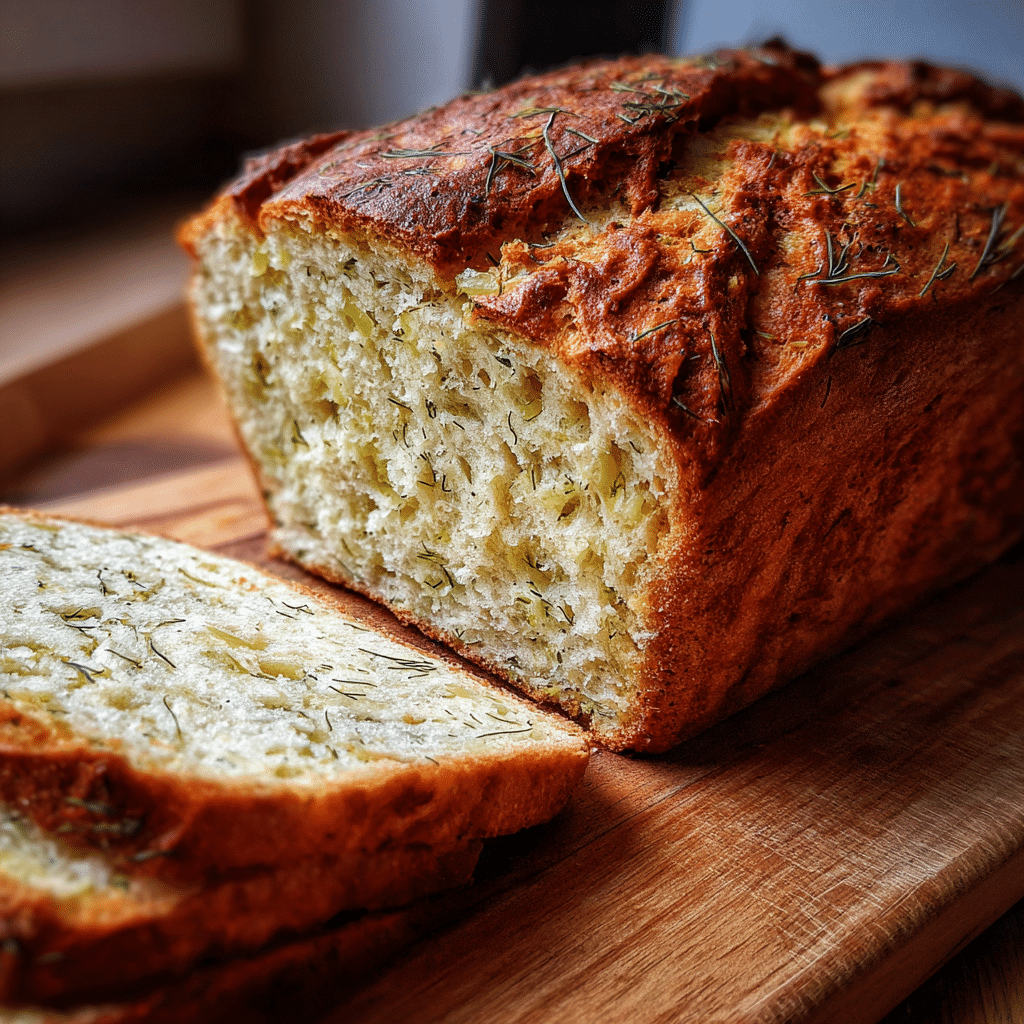
Quick Bread (No-Yeast) Version
The most common form of dill pickle bread is the quick bread. This version skips yeast and uses baking powder (and sometimes baking soda) to rise. It’s easy, fast, and ideal for weeknight baking — no proofing, no kneading.
Here’s how to master the quick bread style:
- Combine the wet ingredients — eggs, oil, and pickle juice.
- Stir in chopped pickles, cheese, and herbs.
- Fold the wet mixture into the dry ingredients until just combined.
- Bake at 350°F (175°C) for about 40–45 minutes.
The result? A soft, moist loaf with a balanced tang that deepens as it cools. This version of the dill pickle bread recipe is perfect if you want homemade bread in under an hour.
Check out our Bread Machine Kaiser Rolls Recipe if you’re interested in more no-yeast bread ideas that deliver bakery-fresh texture.
Yeasted Loaf Version
If you’re after a more classic bread structure — chewy crust, airy crumb — go for a yeasted dill pickle bread recipe. You’ll need active dry yeast, which creates a light and springy loaf.
Steps for the yeasted method:
- Mix warm pickle juice with a pinch of sugar and yeast; let it bloom.
- Add flour, salt, oil, and chopped pickles.
- Knead until smooth and elastic (about 8 minutes).
- Let it rise for an hour, shape, and bake.
The yeasted version produces a loaf that slices beautifully for sandwiches. The subtle dill flavor permeates the entire dough, making every bite taste fresh and aromatic.
Sourdough or Fermented Variation
For those who love tangy artisan loaves, a sourdough dill pickle bread recipe is a flavorful twist. Using a mature sourdough starter and a touch of pickle juice, you get complex acidity with earthy depth. It’s excellent with soups, cheese boards, or grilled meats.
Because the pickle juice naturally enhances sourness, you can reduce the fermentation time slightly. The crumb turns out tender but with that perfect chewy crust sourdough fans crave.
Looking for more fermented or naturally flavored ideas? Learn more about Lemon Ginger Ferment Recipe for tangy inspiration.
Savory Muffins and Mini Loaves
If you love portion-controlled treats, you can easily adapt this dill pickle bread recipe into muffins or mini loaves. Simply reduce the baking time to 20–25 minutes. These are perfect for lunch boxes, picnics, or party platters.
Add-ins to try: diced ham, crumbled bacon, or shredded carrots for color and texture. Mini loaves also freeze well — just wrap and store for up to 3 months.
Don’t miss our Vegan Sheet Pan Quesadillas for another creative savory bake packed with flavor and plant-based goodness.
Tips & Troubleshooting for Dill Pickle Bread Recipe
Even though a dill pickle bread recipe is beginner-friendly, small adjustments can make a big difference between a perfect loaf and one that’s too dense or soggy. Here are expert tips and troubleshooting solutions to make sure your bread turns out light, flavorful, and irresistible every time.
Avoid Overmixing the Batter
One of the most common issues with any dill pickle bread recipe is overmixing. When you stir the batter too much, you develop excess gluten, which makes the bread tough and chewy instead of tender. The secret is to stir just until you no longer see dry flour.
If the batter seems too thick, add an extra tablespoon of pickle juice or milk — this helps maintain the ideal consistency without losing flavor.
Check out our Vegan Blueberry Muffins with Sorghum Flour to see how minimal mixing leads to a light, soft crumb every time.
Balancing Moisture and Texture
Pickles naturally contain moisture, which can throw off your dough’s balance. To prevent sogginess:
- Drain chopped pickles on a paper towel before folding them in.
- Use the right amount of pickle juice — too much will make the loaf gummy.
- Bake until the internal temperature reaches 190°F (88°C) to ensure the center is cooked through.
If you prefer a softer texture, swap part of the flour for whole wheat or oat flour, which absorbs more liquid and adds subtle nuttiness.
Discover great ideas like Chewy Vegan Monster Cookies for mastering ingredient moisture control across recipes.
Preventing Soggy or Undercooked Centers
A soggy center is often caused by underbaking or too much liquid. Always preheat your oven fully, and check the bread at 40 minutes with a toothpick or thermometer.
For a crisp crust and tender crumb, let your dill pickle bread cool completely on a wire rack — trapping steam inside the pan will soften the crust.
Don’t miss our Ground Beef and Gravy over Mashed Potatoes for inspiration on pairing rich textures with savory sides that balance flavor and moisture.
Maximizing the Tangy Flavor
If your dill pickle bread recipe tastes too mild, there are a few easy ways to intensify the flavor:
- Use extra-sharp cheddar or aged gouda for deeper savory notes.
- Add a tablespoon of pickle brine directly into the batter.
- Mix in chopped fresh dill or a touch of mustard powder.
- Use garlic dill pickles for stronger herby tang.
On the other hand, if the bread is too sour for your liking, reduce the pickle juice slightly or add ½ teaspoon of sugar to balance acidity.
Want more ways to enhance savory flavors naturally? Learn more about the Cowboy Butter for Steak — its garlic and lemon base works beautifully as a topping for warm dill pickle bread slices.
Serving Ideas & Pairings for Dill Pickle Bread
One of the most delightful things about this dill pickle bread recipe is how versatile it is. Whether served warm out of the oven or toasted the next day, its tangy, savory flavor makes it a perfect match for a variety of dishes. Below, you’ll find some of the best ways to enjoy it.
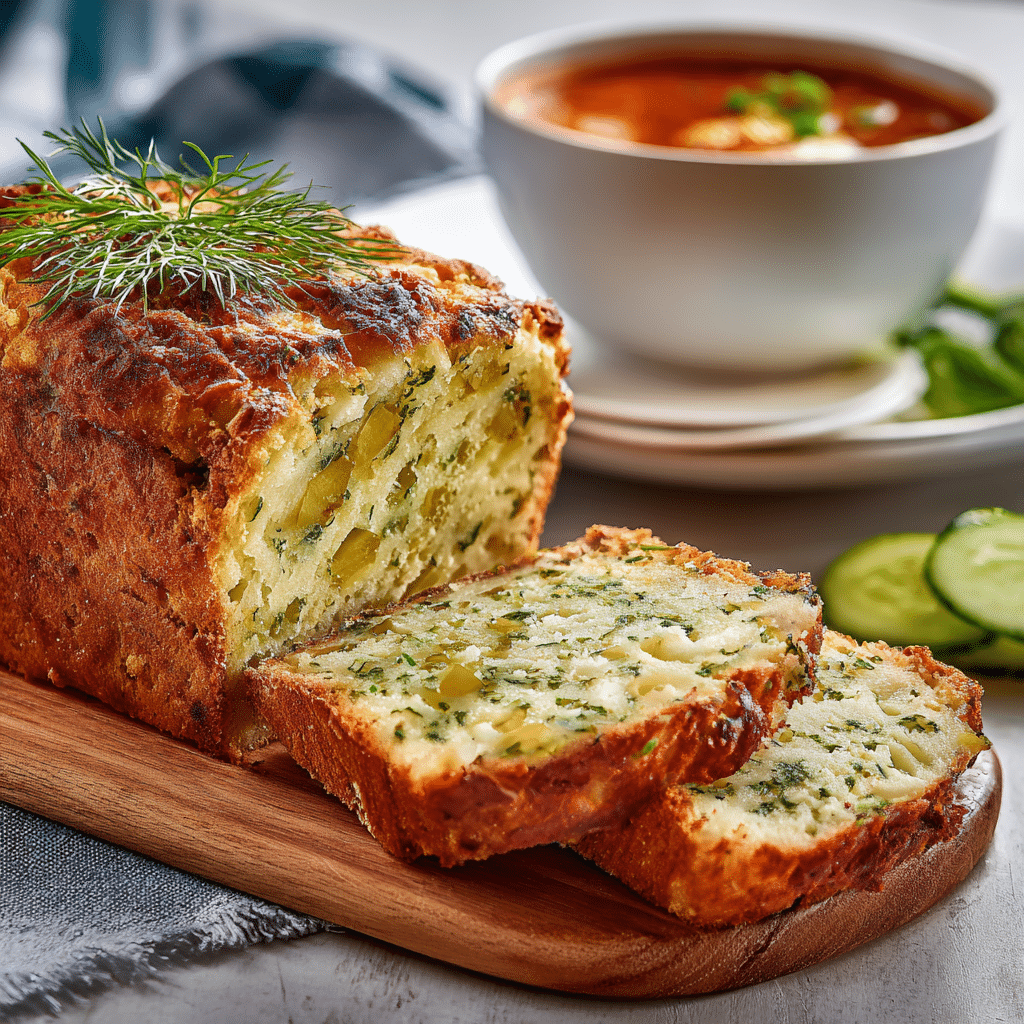
Pair Dill Pickle Bread with Soups and Stews
The sharp, briny notes of dill pickle bread cut beautifully through creamy or hearty soups. It’s especially good with rich, dairy-based or tomato-forward recipes that need a zesty companion.
Try serving it alongside:
- Tomato soup – the acidity complements the bread’s tang.
- Potato or broccoli cheddar soup – the creamy base contrasts the dill.
- Beef or chicken stew – balances savory depth with brightness.
Don’t miss our Cold Cucumber Mint Soup, a refreshing pairing that enhances the herbal dill notes while cooling your palate.
Sandwich and Toast Creations
A freshly baked dill pickle bread recipe makes an excellent sandwich base. The hint of dill and pickle adds complexity to simple fillings. Use it to elevate your everyday lunch:
- Grilled cheese sandwich – add sharp cheddar or Swiss for a melty bite.
- Ham and mustard sandwich – doubles the tang with smoky richness.
- Turkey and avocado toast – for a balanced, healthy twist.
If you prefer open-faced options, toast slices and top with cream cheese and smoked salmon for a deli-style snack. For something more indulgent, try buttering the bread and pan-searing it for a golden crust.
Looking for other sandwich-worthy recipes? Learn more about the Supermodel Sandwich for layered textures and fresh flavors.
Perfect for Brunch and Appetizers
When it comes to brunch spreads, this dill pickle bread shines. Serve it alongside eggs, salads, or charcuterie. Its bold tang pairs wonderfully with bacon, roasted vegetables, or scrambled eggs. You can even cube it to make croutons for a pickle-inspired salad.
For a party platter, slice it thin and pair with creamy dips, herbed butter, or cheese spreads. Its unique flavor turns heads and sparks conversation.
For another brunch-friendly bake, don’t miss our Peach Crumb Muffins, which balance sweetness like this bread balances savoriness.
Beverage Pairings for Dill Pickle Bread
When thinking drinks, you’ll want something that highlights the bread’s acidity and saltiness:
- Crisp white wine (like Sauvignon Blanc) accentuates the dill flavor.
- Light beer pairs beautifully with the cheesy, salty notes.
- Sparkling water with lemon for a refreshing non-alcoholic option.
For an adventurous twist, pair it with a tangy drink like the Turmeric Golden Milk Detox Recipe — the earthy turmeric balances the brine for an unexpected but satisfying contrast.
Creative Serving Twist: Make It a Snack Board Star
Cut your dill pickle bread recipe into cubes and serve it as part of a grazing board. Combine it with mini dill pickles, cheddar cubes, olives, and smoked meats for a flavorful, tangy mix. It’s the perfect conversation piece at any casual get-together.
FAQs
Why is my dill pickle bread soggy in the middle?
Undercooking or too much liquid are the usual culprits. Make sure your oven is preheated, test with a toothpick, and reduce extra pickle juice if needed.
Can I make this recipe gluten-free or dairy-free?
Yes — substitute a 1:1 gluten-free flour blend and use flax or chia eggs. For dairy-free, use a plant-based cheese or omit cheese and add more herbs.
How do I reduce the sodium in dill pickle bread?
Use low-sodium pickles or rinse the chopped pickles before adding. You can also decrease added salt by ¼ teaspoon, and offset with herbs or garlic powder for flavor.
Can I use pickle juice only or do I need whole pickles too?
You can use pickle juice alone for tang and moisture, but chopped pickles add texture and bursts of flavor. For best results, combine both.
Conclusion
The dill pickle bread recipe is a standout twist on savory breads—where tangy brine meets soft, cheesy crumb. Whether you bake it as a quick bread, yeast loaf, or mini muffins, it’s as fun to experiment with as it is to eat. Use the storage tips, troubleshooting advice, and variations above to make it your own. Try it, tweak it, and share your results!
If you enjoyed this dill pickle bread recipe and love exploring new flavors, follow me on Pinterest for fresh recipe visuals and follow me on Medium for detailed cooking insights and kitchen experiments.
